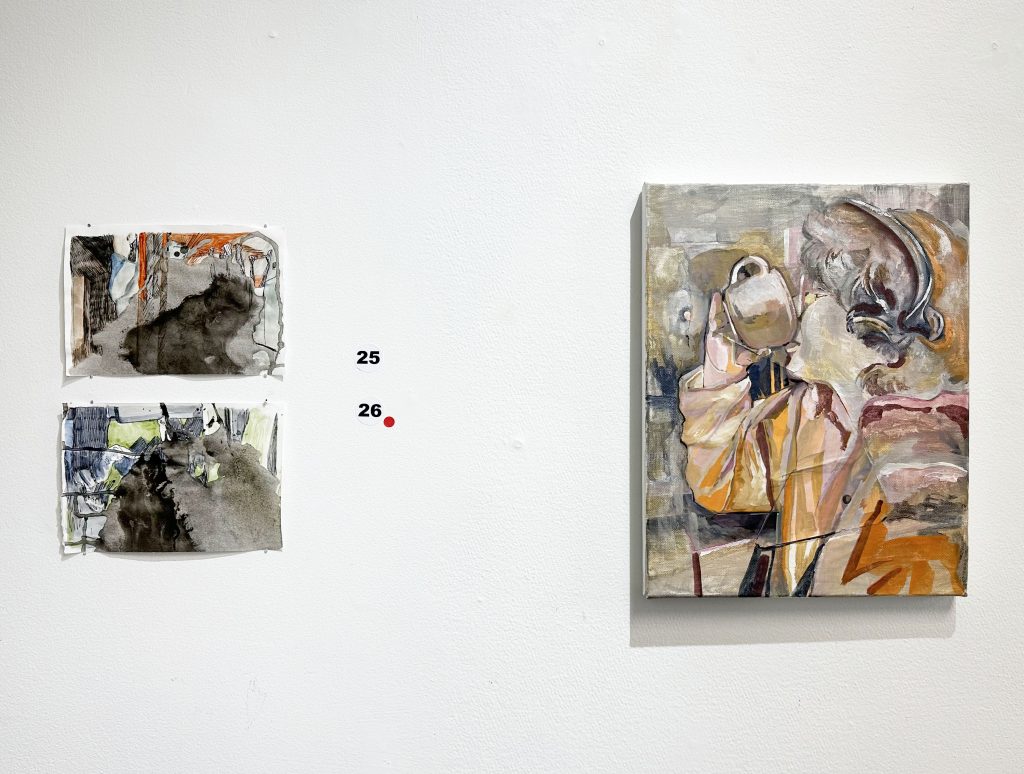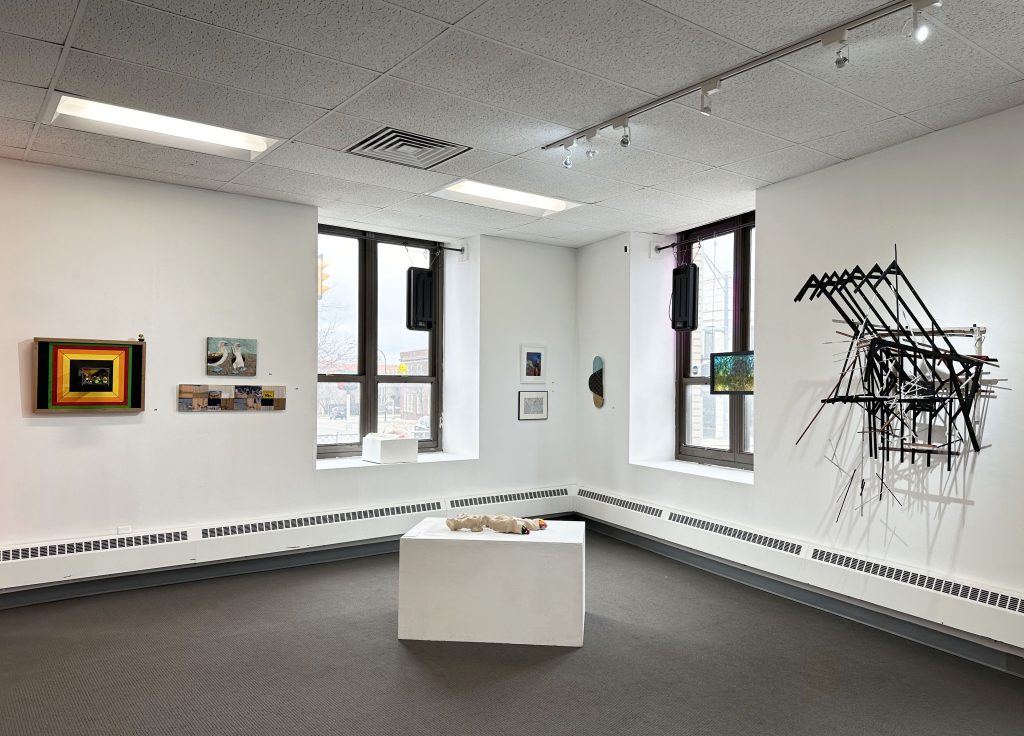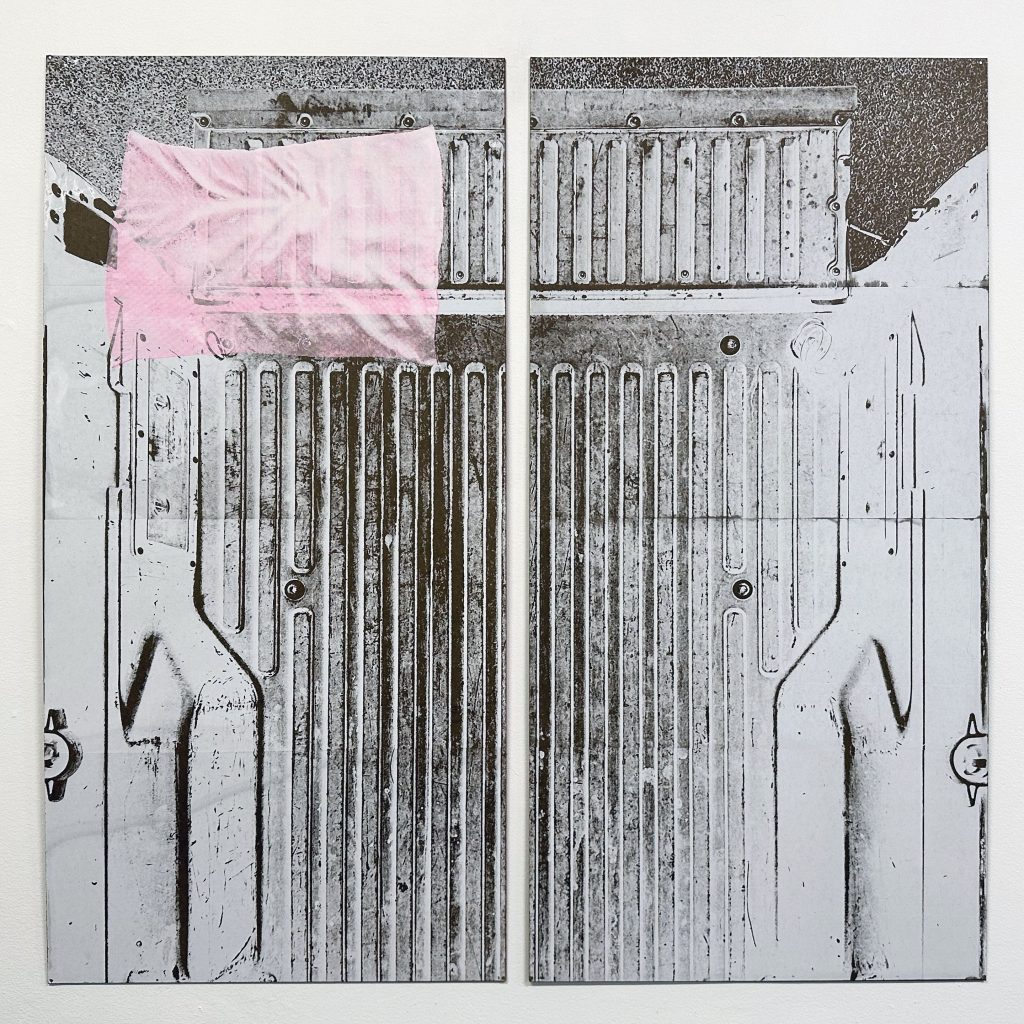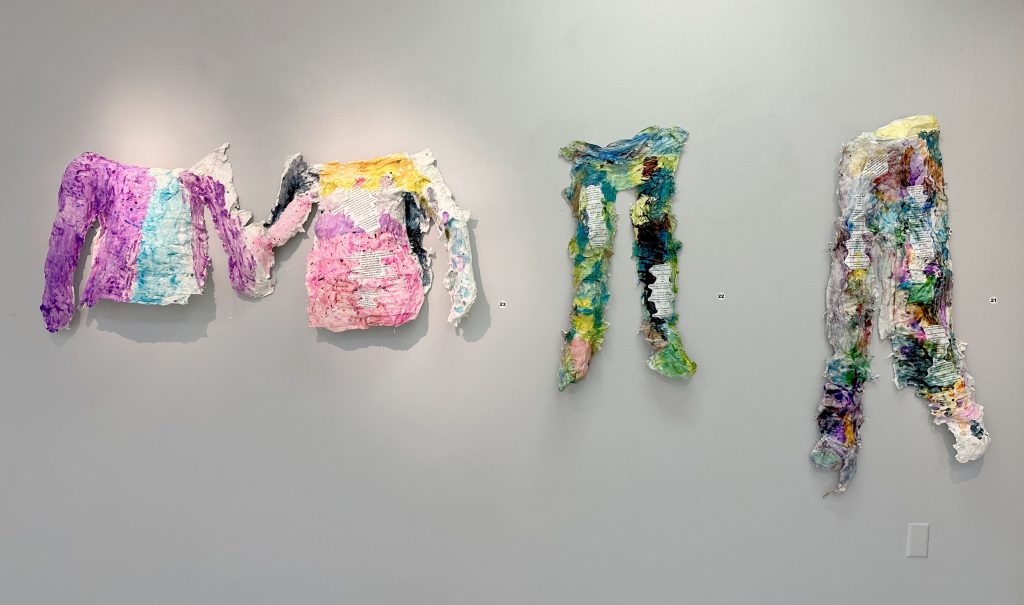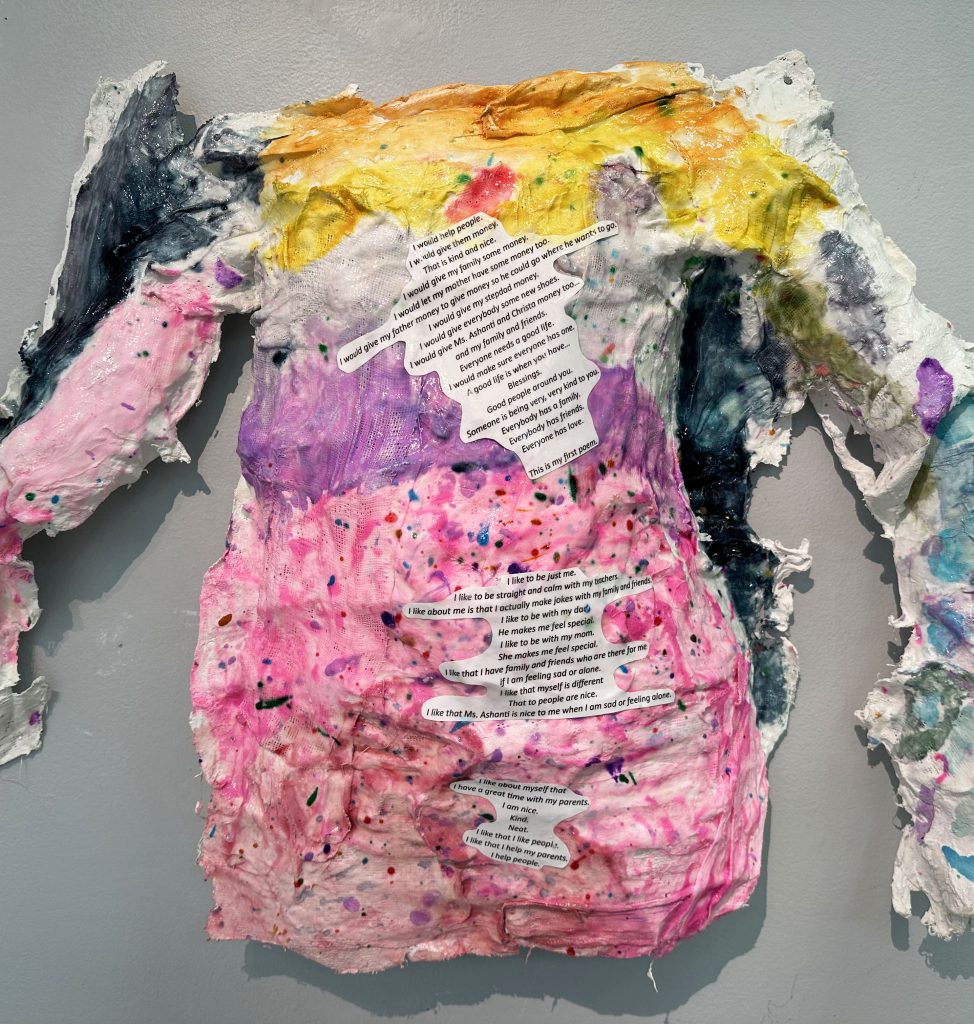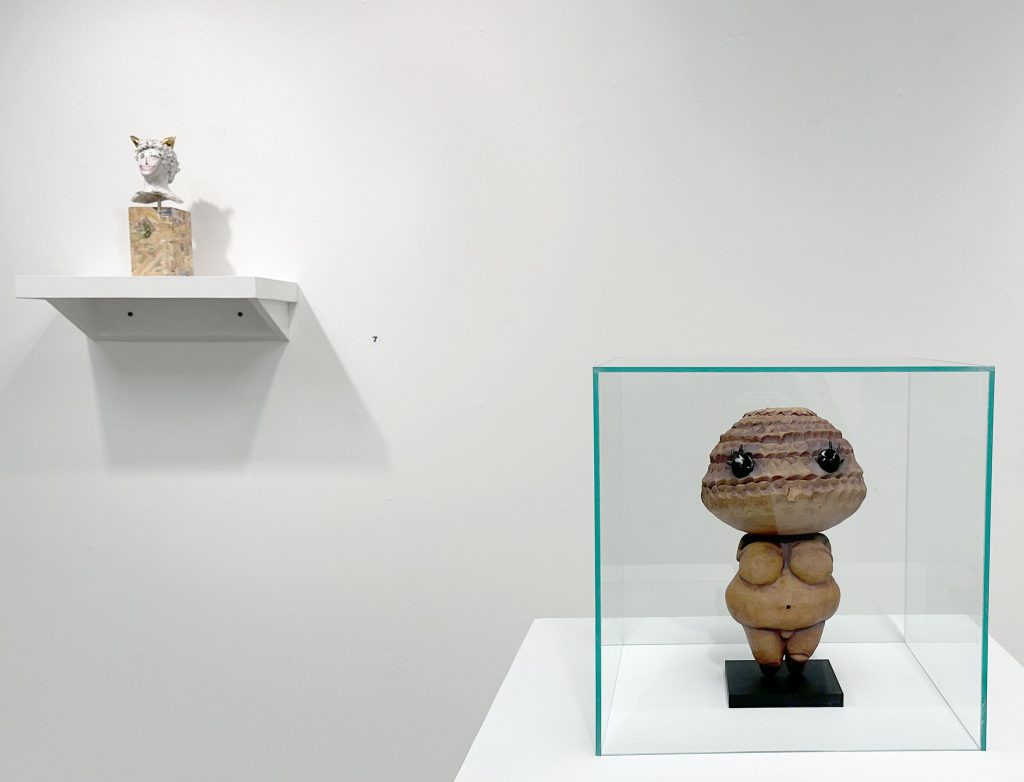
Chad Troyer “Crashing Waves” (bottom) and “Calming Shores” (top) Jacquard-woven, gradating waffle weave; Cotton, linen, rayon, silk, birch

Jen P. Harris “Oscillator” (left) and “Sphinx” (right) Hand-woven cotton, canvas, gesso, and thread on wood stretcher bars//Hand-woven cotton, canvas, thread, and acrylic paint on wood stretcher bars

Trey D. Gehring, “Stacked” Woven cotton yarn, crocheted acrylic yarn, fabric paint

Etta Sandry “Pivot: Moi-même” and “Pivot: Big Squish”, Cotton and cottolin, handwoven on Jacquard loom//Cotton and wool, handwoven on Jacquard loom
There are some incredible pieces in Waffle Weave Invitational, one of the current exhibitions at Summit Artspace. A few selections are pictured, but head to the gallery’s website to see all of the work on view.
From curator Stephen Tornero (who also has work in the show)-
This show was conceived as an idea to focus on a specific structural variable of a textile, and see how many different variations artists, artisans, and craftspeople would be able to produce. While researching the development of weaving technology, a loom with the capability to create complex structures was developed around 600 CE simultaneously in different cultures. This structure could have been produced by these looms, but also could have been designed much earlier by hand-manipulation of threads by the weaver. The waffle structure is so unique in its ability to transform a textile- seemingly a two dimensional surface- into a three dimensional object that has depth as shown by many repeated square pyramidal cells. Historically, this structure was used to create a textile that would hold water in its cells for cleaning or drying, or to help insulate the body with tiny pockets of air. This structure can be modified by changing the color of the threads with which it is woven, the fiber content of those threads, or even by expanding the amount of threads used in a cell, expanding the scale.
Statements from the artists about the work pictured above (from the Summit Artspace website)-
Stephen Tornero– Don’t Tell Me– “This piece is part of a continuing study of material, color, and structure in textiles. I have been mesmerized with the “waffle weave” structure and its ability to create large, three dimensional pockets of space. This pieces experiments with the combination of the flexible, fibrous wool yarns with the rigid neon acrylic rods. These two materials are combined in a large textile in order to explore the effects that this unique weaving structure will have on these materials. This use these two opposing materials in the piece creates a dialogue between the traditional usefulness of this wool weaving and its display on the wall as a work of art.”
Chad Troyer– Crashing Waves and Calming Shores– “The gradating structure allows for the weft to float acrost the surface of the weaving for varying lengths, from half an inch to nearly the whole width. The warp is allowed to float for varying lengths, but not nearly as long as the weft. After it was taken off the loom, the weaving was stretched. Parts of it were pulled, and others were left loose, allowing the floats to be accented by the folding and tautness of the cloth. The two pieces are the same piece of cloth cut apart, however they both display a different state of being: turbulent & calm.”
Jen P. Harris– Oscillator and Sphinx– “These small weaving-painting hybrids are part of an ongoing, experimental body of work in which I am developing a heterogeneous formal language that both honors and questions histories and conventions of painting and weaving.”
Trey D. Gehring– Stacked– “Stacked follows a line of investigation by the artist into a poststructuralist analysis of language as a system of symbols that lack meaning beyond context. The piece melds the namesake with the woven structure itself creating a hyper-literal interpretation of the exhibition’s theme. However, an understanding of the theoretical underpinning is unnecessary and secondary to the enjoyment of the whimsical and humorous nature of the work.”
Etta Sandry– Pivot: Moi-même and Pivot: Big Squish- “My woven work focuses on samples that explore dimensionality in woven cloth using techniques such as multi-layer weaving, pleating, and woven structures that are elastic, self-shaping, and otherwise transformative, like the pocketed cells of waffle weave. This work creates a series of translations between the flat draft and the materiality of the cloth. Weaving is a technically binary structure: a warp thread can be either raised or lowered. When drafted, woven structure is drawn as a flat grid. Woven in multiple layers, cords, and pleats, weaving maintains its inherent binary nature but takes on a new physical dimensionality. Between the flat draft and the woven cloth, there is an unknowable material transformation that reflects the nuance, radical variation, and possibility that emerges from a seemingly set and limited system. In these works, this variation is expressed through two large waffle weave samples that test the limits of the waffle structure. Each piece weaves the same design of increasingly large waffle cells. Moi-même presents a balanced the waffle weave in which warp and weft threads of a similar weight and color draw out a subtle loosening of the structure as the size of the cells increase. In The Big Squish, the waffle structure is boldly packed, extended and distorted by colorful wool wefts.”
This exhibition closes 3/16/24.
